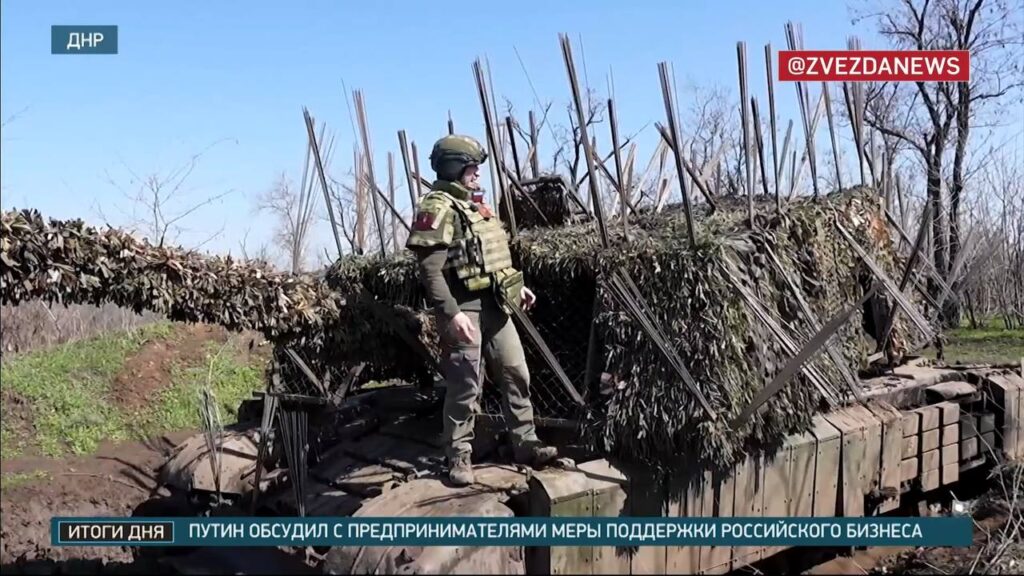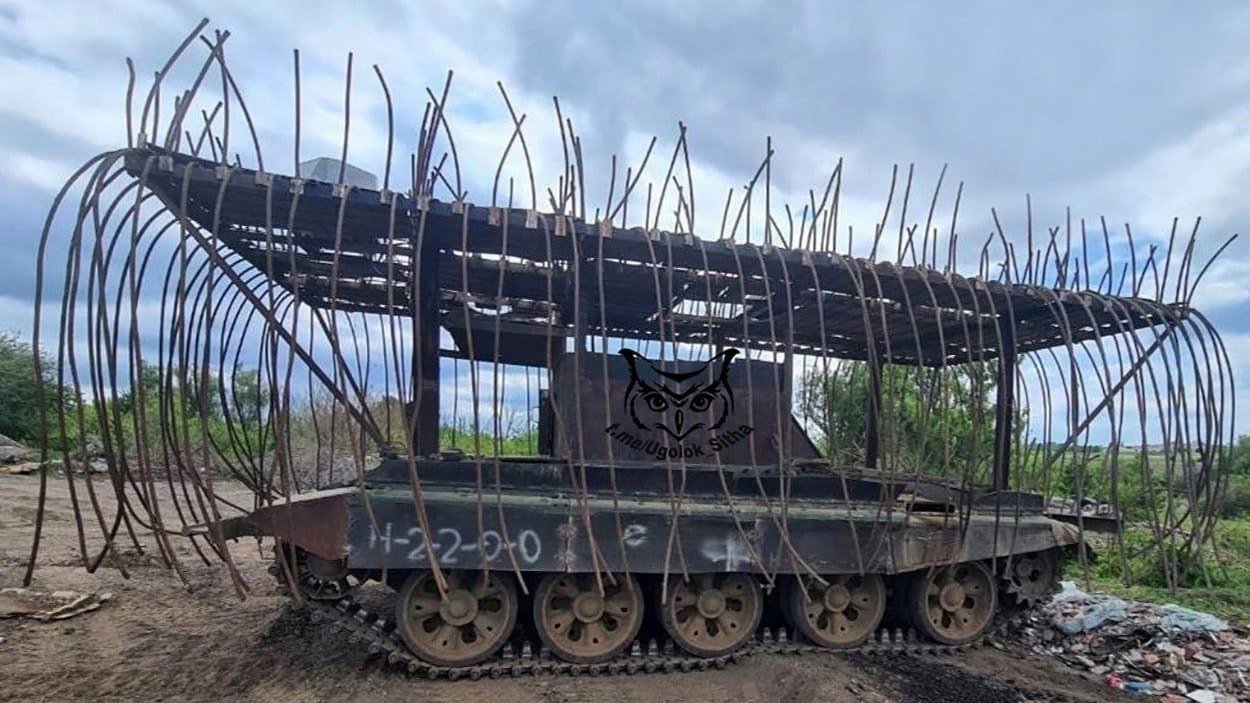First there were cope cages: metal grills surrounding a vehicle. After that—turtle tanks with sheets of metal attached to their cages. Now the Russians are adding metal quills to more and more armored vehicles, transforming them into “porcupine” vehicles.
A striking image of a bizarre modification to a Russian armored engineering vehicle is the latest evidence that a layer of metal spikes—like the quills of a porcupine—can protect vehicles from some types of explosive drone.
A photo recently circulated online depicting a Russian BREM engineering vehicle, based on the chassis of a T-62 tank. But it wasn’t just any BREM. No, this vehicle sports seemingly hundreds of lengths of rebar or some other thick metal wiring, jutting from an anti-drone screen bolted to the vehicles’ hull.
Both sides in Russia’s 40-month wider war on Ukraine use BREMs to tow disabled vehicles, help build fortifications and breach the enemy’s own fortifications. Traveling near the line of contact, BREMs are in constant danger from the thousands of tiny first-person-view drones that prowl the 1,100-km front every day.
So it makes sense that the Russians would up-armor their BREMs. What’s surprising is that they’re adding porcupine armor in addition to the standard cope cage. One month after the first Russian porcupine vehicle appeared along the front line, there’s mounting evidence that the strange armor is becoming standard on the Russian side.
Which means it may spread to the Ukrainian side, too—as Russian anti-drone innovations have tended to do.
The first prominent Russian porcupine vehicle, a BMP with hundreds of quills, didn’t last long. Apparently immobilized by a mine or some other munition shortly after first appearing around the town of Troitske in Donetsk Oblast in mid-May, the BMP was blown up by Ukraine’s famed Birds of Magyar drone group, which flew an explosive FPV directly through an open hatch on the idling BMP.
The porcupine vehicle’s fiery fate may not have been the fault of its add-on metal spikes. An unmoving vehicle is an easy target for any skilled FPV pilot. On the move, a vehicle with quills may be able to deflect most FPVs before they can strike the vehicle’s hull.

Proliferating porcupines
It’s for that reason that more Russian vehicles are getting porcupine armor. In late May, Russia’s Zvezda T.V. news broadcast a report on a Russian tank unit on the Pokrovsk front in eastern Ukraine—and the tanks all had rebar spines, similar to the spines on the BMP.
The spines are the fourth layer of anti-drone defense on those particular tanks. First, the tanks’ own armor offers some protection—although there are lots of weak spots on the top, in the rear, along the treads and between the turret and hull.
On top of the baseline armor, the tanks have cope cages. The spines are the third layer. “Bundles of metal wire like these are welded directly onto the cope cage,” Zvevda noted.
“Before a combat mission, they are fluffed up,” Zvezda continued. That is, the crew bends the quills outward. “The tanks turn into an iron hedgehog”—porcupine is more accurate—“and when FPV drones attack, they run into these needles.”
The fourth layer of protection comes from the short-range radio-jammers that can be found on many Russian vehicles. That the Russians are adding additional layers of physical protection points to possible issues with the jammers.
It’s also possible the metal spines themselves might interfere with the jammers’ signals, according to the pro-Ukrainian Conflict Intelligence Team. “It raises questions about how such modifications affect the effectiveness of [electronic warfare] systems,” CIT noted.
But if the jammers are already ineffective—a distinct possibility given Ukraine drone operators’ transition to frequency-hopping controls or even fiber-optic drones that don’t rely on wireless radio links—why not try spines?
There’s another risk, however. It’s already difficult for the crews of up-armored tanks to escape their vehicles after taking a hit. The spines could exacerbate the issue. CIT wondered aloud whether porcupine armor may “hinder the crew’s ability to quickly exit the vehicle.”
It’s clear the Russians are willing to risk electronic interference and crew access if it means a vehicle stands a greater chance of blocking FPVs. The tiny drones now account for the majority of vehicle losses on both sides.





